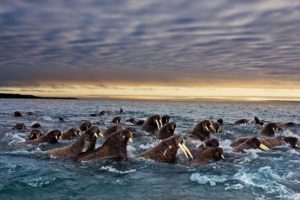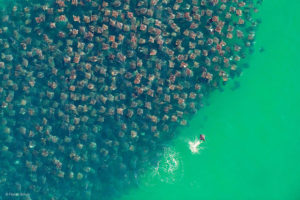 And then spent 4 hours reading about animal migrations.
And then spent 4 hours reading about animal migrations.
I literally feel horrible for city birds. I don’t cry easily, mainly because I grew up watching every Rocky and Rambo movie, but when I see tiny birds fighting over a day-old-pizza-slice on the side of St. Marks Place, it almost moves me to carry a loaf of bread at all times or to build an elaborate bird feeder system on our fire escape – with a side goal of taming this hawk in Tompkins Square Park. As nice as it is to have wild life in NYC, I wish I could tell them all to migrate to Cape Cod – my mom is a real life animal whisperer, the closest thing to Snow White with her Woodland creatures. This recent unrealistic idea led to a google search of animal migrations, which rerouted me to spending a full night on National Geographic yet again. So in case you need a reason to go to the gym/move around more in life, here are the toughest migrations known:
Distance traveled – 44,000 miles – The Arctic tern, a four ounce bird, travels from the Arctic to Antartica…and then back
Longest mammal migration – 14,000 miles – A gray whale broke the record for the longest distance traveled by a mammal, swimming 14,000 miles along the Pacific Ocean
Most dedication animal – 10,000 miles – Leatherback Sea Turtles travel 10,000 miles between feeding and breeding grounds so that they can return to the same exact beach where they were born in order to lay their own eggs
Fastest migration – 7,145 miles nonstop – The bar-tailed godwit flies nonstop from Alaska to New Zealand – without stopping to get food, water or rest – and can usually do it in 2-3 days
Body size/Distance ratio – 620 miles – Monarch butterflies (0.08 inches wide) travel from Texas to Illinois every year in search of food
Harshest conditions – 600 miles – Caribou go from the boreal forests to the tundra and back every year
Largest group migrating together – 2 million individuals –Wildebeest travel in a group of 2 million from July through October, traversing 600 miles from Tanzania to Kenya
Ok, stopping now.


